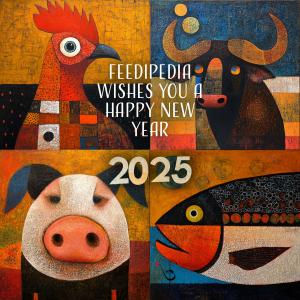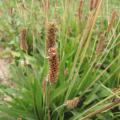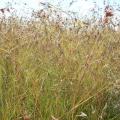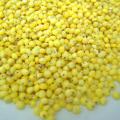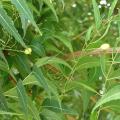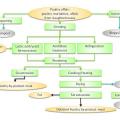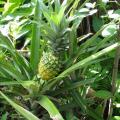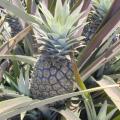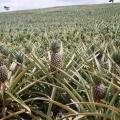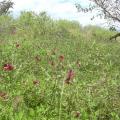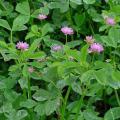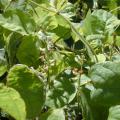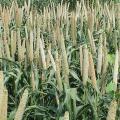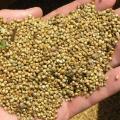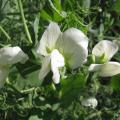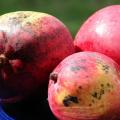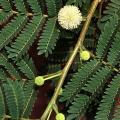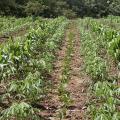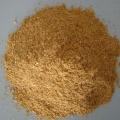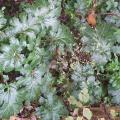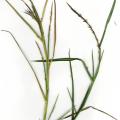Explore Feedipedia
|
Ribwort plantain (Plantago lanceolata L.) is a stemless herbaceous perennial... Read more |
Red oat grass (Themeda triandra Forssk.) is a tufted perennial grass of highly... Read more |
The proso millet (Panicum miliaceum L.) is a cereal plant cultivated for its... Read more |
|
Neem (Azadirachta indica A. Juss.) is a multipurpose tree that is highly popular... Read more |
Poultry by-product meal is one of the most important source of animal protein used to... Read more |
The opium poppy (Papaver somniferum L.) is a multipurpose crop. It is an annual... Read more |
|
Pineapple mill juice (or pineapple syrup) is the liquid extracted from pineapple cannery... Read more |
The pineapple (Ananas comosus (L.) Merr.) is one of the most popular tropical... Read more |
With a world production of more than 18 million tons in 2009, pineapple ranks 12th... Read more |
|
The phasey bean (Macroptilium lathyroides (L.) Urban) is an erect branching... Read more |
Persian clover (Trifolium resupinatum L.) is an annual, prostrate or semi-erect... Read more |
Perennial soybean (Neonotonia wightii (Wight & Arn.) J.A. Lackey) is a... Read more |
|
Pearl millet (Pennisetum glaucum (L.) R. Br.) is an erect annual grass, reaching... Read more |
Pearl millet (Pennisetum glaucum (L.) R. Br.) is an annual grass, erect and... Read more |
Peas (usually Pisum sativum L.) are one of the four most important legume crops... Read more |
|
Mangos are the most important tropical fruit crop after bananas and plantains (FAO, 2011... Read more |
Leucaena (Leucaena leucocephala (Lam.) de Wit) is a fast growing, evergreen,... Read more |
Jack bean (Canavalia ensiformis (L.) DC.) is a climbing perennial legume... Read more |
|
Corn gluten feed is the by-product of the wet-milling of maize grain for starch (or... Read more |
Acanthus mollis L. is a perennial herb that can grow to a height of 0.9-1 m. It... Read more |
Limpo grass (Hemarthria altissima (Poir.) Stapf & CE Hubbard) is a grass... Read more |
Pages
Recent resources
 Opinion paper: Phasing out of the aid provided to the livestock sector during expectedly recurrent emergencies
- Makkar, 2024. animal
Opinion paper: Phasing out of the aid provided to the livestock sector during expectedly recurrent emergencies
- Makkar, 2024. animal
Open access opinion paper that makes a case that the emergency aid do more harm than good to African countries. It is valid for all the fields of agriculture but has direct consequence for animal agriculture. The context here is the aid provided during emergencies that are foreseeable recurrent.
The role of livestock in food security, poverty reduction and wealth creation in West Africa
- Molina-Flores et al., 2020. Food and Agriculture Organization of the United Nations Accra, 2020
Livestock is key to 377 million people in West Africa and in some countries, up to 60% of the population is involved in livestock production. The demand for animal products is increasing with population growth, urbanization, growing middle class, and due to shifting consumer preferences towards animal products. To meet this growing demand, countries in West Africa must engage in accelerated sustainable livestock production undertaking. Livestock development is key to eradicate hunger and poverty. This book attempts to provide up-to-date, and reliable information on the potentials, opportunities, and challenges of the livestock subsector in West Africa.
Pulses and their by-products as animal feed
- Sherasia et al., 2017. In: Calles, T.; Makkar, H. P. S. (Eds), FAO, Food and Agriculture Organization of the United Nations, Rome, Italy
This document provides a state-of-the-art review of the recent research (published and unpublished) on the use of pulses and their by-products as animal feed. It aims at raising awareness on the use of pulses and their by-products. It highlights the nutritional role of pulses and pulse by-products as animal feed and is a contribution to the legacy of the 2016 International Year of Pulses. This document will further enhance the use of these feed resources in other continents, besides Asia, where many pulse by-products are simply dumped. It is also expected that the synthesis presented contributes to make the use of pulses and their by-products as animal feed more efficient. This document will be useful for extension workers, researchers, feed industry, policy-makers and donors alike.








